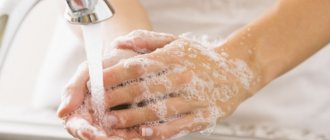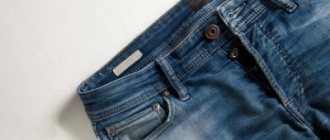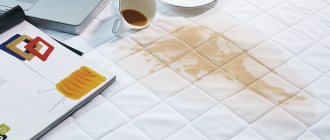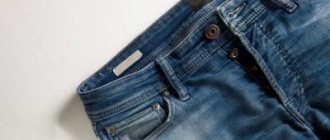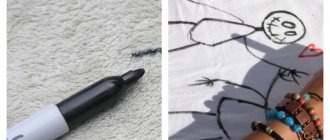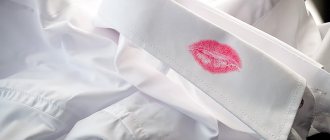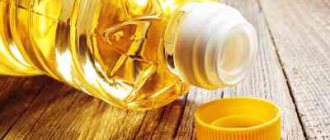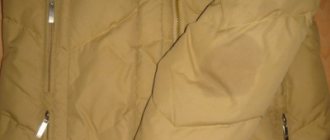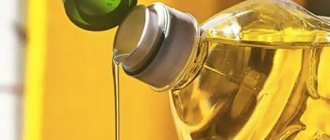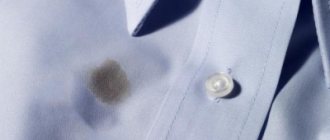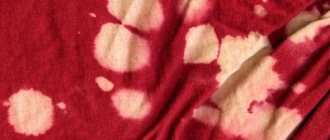If initially a white T-shirt served exclusively as an element of men's underwear, today it is a completely independent item of clothing. Moreover, both women's and children's. It would seem, what is special about it? However, a simple light T-shirt can liven up both a formal suit and bad trousers. It complements a jacket of any color favorably, and in combination with a black bottom gives the image solemnity and elegance. The only drawback of white clothes is that they get dirty. But this trouble can be overcome.
How to bleach a white jersey T-shirt
Classic, high-quality white T-shirts are made from cotton jersey with minimal addition of synthetic fibers. It is not difficult to bleach a white T-shirt made from natural material, since cotton withstands aggressive influences and retains its structure and shape. You can safely use one of the following three methods.
Before starting whitening, carefully study the composition of the product, which is indicated on the label. Methods for knitwear are suitable if the item consists of 50% or more natural fibers.
Chlorine
Peculiarities. If your shirt has turned grey, the easiest way is to use bleach or another chlorine-based bleach. It is useful to repeat this procedure after several washes. But follow the recommended proportions and time, otherwise chlorine may damage the fibers.
Instructions
- Wash the T-shirt as usual.
- Prepare a solution at the rate of one tablespoon of bleach per 3 liters of hot water.
- Dip the T-shirt in the bleach and soak it thoroughly.
- Leave for 15-20 minutes.
- Rinse thoroughly in cold water.
Boiling
Peculiarities. Removing old yellow stains from a white cotton T-shirt is more difficult. If you want to restore the freshness of your favorite T-shirt, which you are not ready to part with, you will have to revive it by boiling.
Instructions
- Pour water into a large enamel pan or basin and dissolve bleach for natural fabrics in it (see the instructions for the product for the quantity) and a couple of spoons of washing powder (shavings of laundry soap).
- Submerge the shirt in water.
- Place the container on the stove and boil the product for 15 minutes to an hour, depending on the degree of contamination.
- From time to time, turn the T-shirt over with a wooden spatula so that the item is evenly saturated with the solution.
- After boiling, leave the T-shirt to cool in the soapy solution.
- Rinse the item in a large volume of water.
Ammonia
Peculiarities. Experienced housewives know that using ammonia can get rid of various contaminants, so they use the drug to clean the house. An ammonia aqueous solution will also help get rid of stains on a white T-shirt and return it to its whiteness.
Instructions
- Mix three tablespoons of ammonia and 3 liters of warm water (30°C).
- Place the washed T-shirt in the solution for three hours.
- You can speed up whitening by adding a little washing powder.
- Rinse.
- If possible, dry the T-shirt in the sun to ensure the effect lasts.
Proper drying and ironing
White shirts require special drying and ironing after washing:
- Shirts should be dried on a towel or hanger;
- drying of things is carried out in well-ventilated areas;
- The shirt must be ironed wet, or use the spray function;
- The product is ironed from the reverse side, and the recommended temperature indicated on the tag must be observed.
Products made of thin fabric must be ironed through gauze.
Important. White clothes should not be dried on metal dryers or radiators.
Methods for synthetic products
Remember that synthetic fabrics cannot be bleached in the same way as natural ones. If you ignore the following recommendations, the gray tint will become permanent and the structure of the fabric will be damaged:
- do not boil synthetic T-shirts and do not wash them in hot water;
- do not use bleaches or powders with chlorine;
- do not push too hard;
- Do not dry in direct sunlight.
Oxygen bleach will help wash a yellowed white synthetic T-shirt. The choice of such funds is quite wide. For example, Ariel or Tide gel capsules do a good job. You can also use the folk remedies described below.
Potassium permangantsovka
Peculiarities. Helps eliminate yellow spots and refreshes white color. The concentration of potassium permanganate should be minimal, otherwise brown spots will appear on the white background.
Instructions
- Dissolve several crystals of potassium permanganate in warm water.
- Make sure that the grains dissolve without sediment.
- Pour potassium permanganate into the soaking container. The solution should be pale pink.
- Add laundry detergent and mix everything well.
- Place the washed T-shirt in the solution for about an hour.
- Rinse.
Salt
Peculiarities. A synthetic jersey with a rich history is unlikely to be brought back to life. Washed clothes not only turn gray, but also become covered with pills - part with this T-shirt and buy a new one. But if your T-shirt needs to be restored, ordinary table salt will help save it.
Instructions
- Dilute 500 g of salt in 5 liters of warm water.
- Soak the T-shirt for three to four hours.
- Wash it.
Soda and ammonia
Peculiarities. This product will help restore the color of a T-shirt if it has turned gray over time or after repeated washing.
Instructions
- Dilute two tablespoons of ammonia and two tablespoons of soda in 10 liters of warm water.
- Soak for at least three hours.
- Powder wash the T-shirt and rinse thoroughly to remove the particles that give the fabric a gray tint.
Bleach according to Whiteness type
Tired and boring of your old blue jeans? The best way to change your Look is to bleach your hair with bleach. Tautology. Let's look at the simplest method.
Step 1: Jeans Whitening Materials
- Bleach
- Protective gloves
- A bowl or bucket to hold your jeans and bleach
- Linen elastic or white strong twine (or colored ones that leave a mark)
Step 2: Preparing the Jeans
We take bleached jeans. We cut several linen elastic bands. The usual number of them when bleaching jeans is 4. If it’s more, then it’s too bold (tacky). We take one pant leg and tie it with an elastic band around where we want. Bleach, in this place the color change of the bleached jeans will be less intense. Then we'll do the same with the other pant leg.
Step 3: Pour bleach, place jeans
It is better to carry out these operations wearing old clothes. After all, there is always a chance that bleach will get on a new evening dress from Cardin, in which the owner decided to carry out manipulations to bleach her jeans. First we place the jeans on the bottom. Then fill the bucket with bleach, first wearing protective gloves. We do not dilute bleach. Let the jeans to be bleached sit in the bucket for approximately 10 to 15 minutes. You can crush and turn over. Then the decor will be more uniform.
Step 4: Rinse Bleached Jeans
We put the jeans in the washing machine. Pour the remaining bleach in there. If the machine has the ability to load from above, then these operations are performed more conveniently. We do not remove the ties. We run the machine for the entire wash cycle. With soaking, temperature 60-80 degrees, and spinning. No washing powder. The concentration of the jeans bleaching solution will decrease. The streaks will be smoothed out more evenly.
Step 5: Dry
The jeans are almost ready. They have become decorative, unusual and unique. We take our beautiful, home-bleached jeans out of the washing machine. We remove these underwear elastic bands from them. We put the jeans in the dryer, whoever has one, of course, for about an hour or a little less. Or just hang it out to dry. After the bleached jeans have dried, they can be put on and worn immediately. The clothes are democratic. Pedants and perfectionists can iron them out. Although, most likely, they will not bleach their jeans at home. The outfit turned out to be too hot. Friends, of course, are shocked and envious...
If white turns yellow
White clothes turn yellow due to hard water, as a result of using washing powders for colored clothes, insufficient rinsing, or lying in the closet for a long time. Also, if a T-shirt is left in a closet before it is completely dry, small spots of mold may form on it. How to remove a yellow stain from a white T-shirt? Natural fabrics will be saved by the same digestion. But if the item is made of synthetics, you need to know how to remove yellow stains from a T-shirt without boiling.
Laundry soap
- Soak the T-shirt in slightly warm water for several hours.
- Rub with 72% laundry soap until rich foam forms.
- Fill with warm water and leave for another hour.
- Wash and rinse.
- It is advisable to repeat the procedure again.
Ammonia
- Dissolve three to four tablespoons of pharmaceutical ammonia in 10 liters of warm water.
- Soak the shirt for three to four hours.
Peroxide
- Add a tablespoon of peroxide to 5 liters of warm water.
- If the fabric turns gray, add a tablespoon of ammonia or soda to the peroxide.
- Soak the T-shirt for half an hour.
- To ensure even whitening, turn the T-shirt over several times.
Why do yellow spots appear on white clothes after washing?
Items with new marks appearing are not what you expect to come out of the washing machine. The quality of washing depends on the powder and its dosage, the selected machine mode, and the water temperature. For white items, proper sorting of laundry is especially important.
Untidy stains and streaks on white fabric occur for several reasons:
- the fabric was soaked with sweat;
- interaction of an incorrectly selected antiperspirant with the body;
- cooking or cosmetic oils have come into contact with clothing - vegetable oil, foundation, sunscreen, body lotions;
- unsuitable detergent or too much detergent.
If, after washing, yellow spots are found on more than one item, most likely the problem is in low-quality washing powder. Most often this happens with sports, silk and woolen fabrics, for which ordinary powders or gels are not suitable. Things need to be rinsed without adding detergent, after which all stains will disappear.
Rust from the water “sticks” to greasy and sweaty areas during washing. Soiled items must be soaked before the main wash, sweat must be washed off with laundry soap, and greasy stains must be washed off with special products or powder enhancers.
Anti-stain measures
You can quickly get rid of stains of any nature on a white T-shirt using baking soda. Just wet the “blot” and gently rub the product into it with a sponge or soft brush. Leave for half an hour and then wash. Baking soda is also effective for machine washing: add a tablespoon to a portion of washing powder and that’s it.
If the stains are old, then enhance the effect of soda with peroxide and ammonia. Proceed in three steps.
- Mix five tablespoons of soda, three tablespoons of ammonia or peroxide until smooth.
- Apply the mixture to the stain and leave for three hours.
- Wash it.
It is not always possible to remove stains from a white T-shirt even by boiling. Sweat leaves salts on fabrics that traditional bleaches do not respond to. In this case, ammonia works effectively. Apply the product to a fresh stain with a cotton pad and wash after 20 minutes. Old stains will disappear if you mix ammonia with salt.
Which areas get dirty the most and why?
A snow-white shirt is a common type of clothing for both special occasions and everyday life. However, this type of clothing requires careful care. A white shirt tends to get dirty in certain places.
Jewelry
Jewelry contributes to the appearance of a dark coating on the collar. Regular contact with jewelry can cause stains that are visible to others, so your white shirt should be changed daily.
Sweat, dead skin cells
During the day, a person sweats, resulting in a yellow streak on the shirt in areas of increased sweating. Also, during the day, particles of the epidermis are separated from the human skin, resulting in the formation of a strip on the collar.
In the summer, almost every person has this problem, so a white shirt requires daily washing.
Deodorants and colognes
Perfumes contribute to the appearance of dirt on fabrics. Especially if the product is applied incorrectly. You can often notice yellow stains from deodorant in the armpit area, which are very difficult to wash.
Hair care products
Particles of varnish settle on the shirt. Dirt is noticeable on the collar and where the hair comes into contact with the fabric.
Excessive sebum
Human skin has distinctive characteristics; there are types of epidermis that secrete excessive amounts of oil. Contact with a white shirt throughout the day can cause stains on the back, neck and armpits. Such stains are noticeable to others and require urgent removal, otherwise the stains may become embedded and ruin the shirt.
Perfumes
Applying perfume to fabric causes greasy marks to appear, and these stains are difficult to wash off. Excessive stain accumulation can ruin a shirt, so you need to know how to properly remove stains.
After eating or drinking tea
No one is immune from the appearance of marks from coffee and food. Such stains appear on the front of the shirt; many stains are very difficult to remove. Therefore, it is necessary to wash away the contamination immediately.
T-shirts with a pattern
Prints are applied to fabric using thermal printing. The paint penetrates deep into the fibers and adheres firmly. You can bleach or remove stains from a white T-shirt with a pattern using any of the above methods that are suitable for the composition of the fabric.
Some precautions exist only for items decorated with batik or embroidery - it is not advisable to boil them or wash them in hot water. Such clothes are washed by hand and refreshed with special bleaches.
- Oxygen. They do not cause allergies, do not require boiling or hand washing. The composition includes baking soda and hydrogen peroxide. When combined with water, the powder releases oxygen, which breaks down dirt and eliminates odors. Stains from sweat, food, grass and other organic contaminants are affected, but the design does not suffer.
- Optic. In fact, it is not even bleach - the optical effect of radiant whiteness is provided by reflective particles covering the fabric. Suitable for plain T-shirts without large stains or yellowing. It will also not be possible to bleach a faded white T-shirt, but optical brightener will give a shine to a T-shirt that is slightly gray from washing.
How to remove cola from clothes using specialized products
Traditional methods are unlikely to be able to remove old stains from cola, which have not only dried out, but also become well established in the fibers of the fabric. Such cola stains are removed not only from clothes, but also from the upholstery of sofas, armchairs, and carpets using chemical agents - stain removers and bleaches specially designed for this.
These include:
- "ACE Oxi Magic";
- "Udalix Ultra";
- "Astonish Oxy Plus";
- "Sarma Active 5 in 1".
The steps that should be taken with different products to wash cola are approximately the same:
- The drug is applied to the site of contamination.
- Leave for 2-3 hours.
- Wash off with water or, if possible, wash in a washing machine.
To remove cola stains from colored fabric, wallpaper, and upholstered furniture, household chemicals should be chosen based on active oxygen, not chlorine. Otherwise, the item will lose its paint and may fade.
A Vanish brand chemical, which can be bought in the household chemicals department in the form of a powder or liquid, will help remove Coca-Cola stains. A small amount of powder is diluted with water to a mushy state and rubbed into the affected area. After 20-30 minutes, the item is washed as usual. If the drug is liquid, then it is poured directly onto the stain without diluting. Leave on for a few minutes and then wash off.
Using Antipyatin soap you can also remove cola stains from fabrics. It contains alkali, bile and enzymes - substances that dissolve dirty spots on the fabric. To do this, moisten the area of contamination with water, rub it with soap and leave for half an hour. After this, the contaminated area is washed thoroughly with water. If a trace remains, the procedure is repeated. After the cola disappears from the clothes, the laundry is washed in the usual way.
Dishwashing detergents such as:
- "Domestos";
- "Just";
- "Eared Nanny" and others.
All of them are designed to remove food residue from dishes. But they do this perfectly with clothes, furniture, and carpets.
What to do with the “colored victim”
We know very well that white items need to be separated from colored items before washing, but anything can happen. Let's say your favorite T-shirt got into a washing machine with colored clothes. What to do if she turns all the colors of the rainbow? Act quickly and in three stages.
- Immediately soak the T-shirt in ice water and laundry detergent.
- In another container, dissolve a double dose of suitable bleach and soak the T-shirt for six hours.
- Boil a cotton T-shirt with powder and bleach.
These measures do not help in all cases. If stains remain, mix shavings of 72% laundry soap with half a glass of salt, add a tablespoon of starch and citric acid. Apply the paste from the inside out for six to eight hours. Rinse under running water or in a washing machine. This method can “revive” a white item in 80% of cases.
Choosing a detergent
In front of the wide range of laundry detergents available in stores, a buyer can easily get confused. In order to understand what, how and in what mode to wash a T-shirt, you first need to read the information on the label located on the T-shirt, where the manufacturer indicates all the optimal care parameters for this product.
It is also worth paying attention to the washing method, because there are powders that are intended only for hand washing, or only for washing in an automatic machine, but there are also universal products. However, a better solution would be to choose a gel product rather than a powder, as gels dissolve better in water, which reduces the likelihood that the product will remain on the T-shirt.
The optimal and universal means for washing white T-shirts is oxygen bleaches. They take care of the fabric, carefully and effectively removing even heavy dirt from it thanks to oxygen bubbles.
Once you have chosen the most suitable product, you can proceed directly to washing.
How to maintain snow-whiteness
Your clothes will remain neat for a long time if you follow simple care rules:
- monitor the temperature when washing and ironing: an overheated iron leaves yellow-brown prints, and too hot water deforms clothes;
- be careful with the sun - direct sunlight is beneficial for white linen and cotton items, but artificial fabrics turn gray and yellow in the sun;
- control the humidity - in the room where clothes are stored, as well as in the closet, do not leave half-dry items on the shelves;
- use the “correct” hygiene products - persistent yellow stains remain after using deodorants containing aluminum;
- soften the water when washing - basic folk remedies like vinegar do not allow hard water salts to turn white fabric yellow.
It is not always possible to wash a yellowed white T-shirt to its pristine whiteness. Therefore, it is better to use the described recommendations and not run things.
Household chemicals to combat wine stains
No less effective is the use of household chemicals. In this case, both special products and regular detergents are suitable.
The store has a large number of special products, thanks to which you can remove existing contaminants as quickly as possible and without consequences:
“Vanish” is the most popular product; it is usually used to remove complex stains. It can be found on sale in liquid or powder form.
It is important to consider that due to its strong whitening properties, there is a possibility that the product will change its original shade. Amway is a stain remover produced in the form of a spray. Before putting things in the wash, it is recommended to apply a small amount of the product.
Before purchasing this stain remover, you must first study the instructions and understand whether it is suitable for a specific type of fabric and stain. “Antipyatin” is a product known to all housewives. It can be found on sale in the form of spray, powder and gel. Generally suitable for all types of fabrics. It is important to consider that this product will help deal with fresh traces of wine.
In addition, it is worth considering that there are a large number of other stain removers that can be used to wash white clothes. Such substances are usually applied to the product, left for a few minutes, and then sent for washing.
Labels on clothes
Information about the product and how to care for it can be found on the labels sewn into the side seam of the shirt. They contain information about the composition of the material, the exact size, manufacturer, as well as markings.
These icons are the care recommendations that must be followed.
- A basin with a number indicating the recommended water temperature for washing. The maximum temperature for linen, cotton white shirts is 60-95 °C. But for daily washing, it is recommended to set the temperature no higher than 40 °C, including for shirts whose material contains semi-synthetic and synthetic fibers. For products made of silk, viscose - 30 °C, for satin - 40 °C.
- Triangle. If the triangle is empty, then bleaching and soaking with any means is allowed. If there are two parallel lines inside the triangle, the material should only be exposed to oxygen-containing bleach.
- The circle is a sign of professional care or dry cleaning. Depending on the letter inside the circle, exposure to one or another cleaning agent or type of dry cleaning - dry or wet - is expected.
